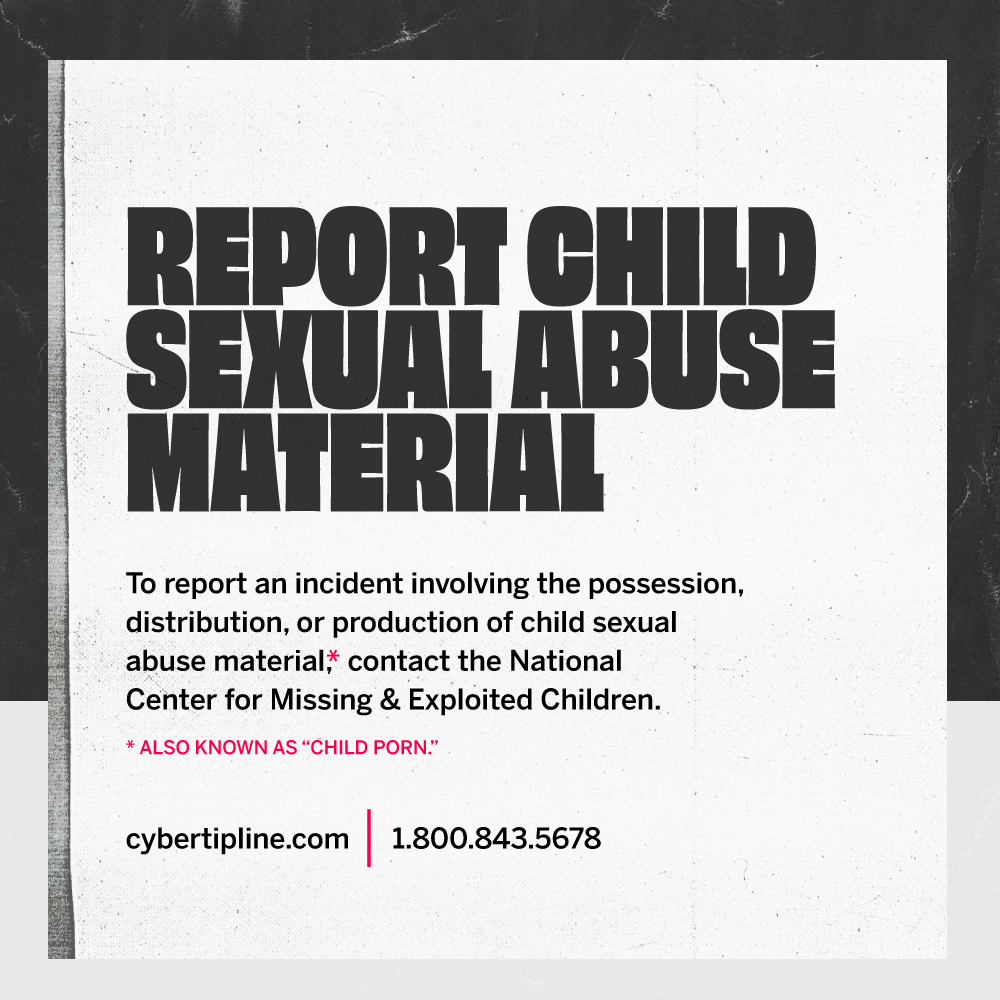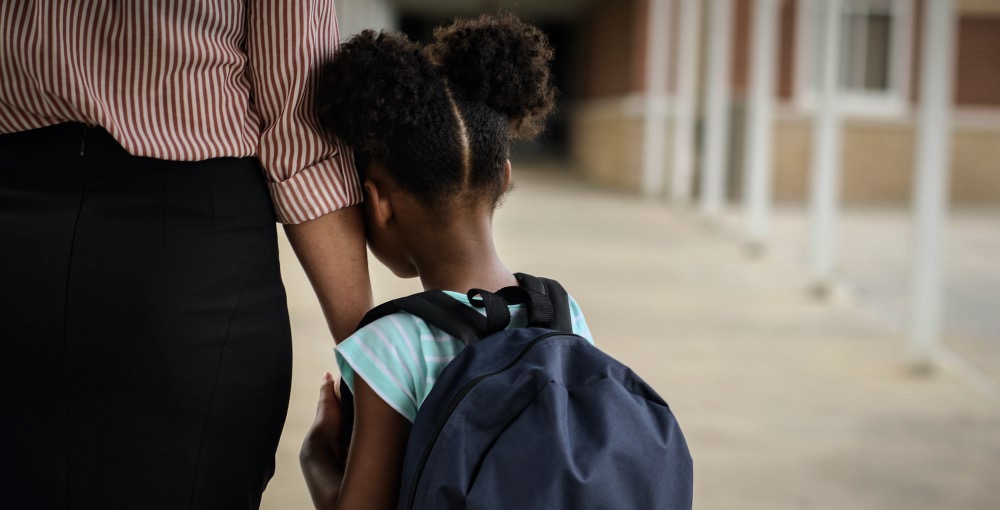There seems to be a joint concern for and defensiveness of the most innocent and helpless among us: children.
Unlike the debate surrounding adult participation in the sex industry, the sexual exploitation of children—in any form—is collectively recognized as unacceptable. The sexual exploitation of children, of course, includes child sexual abuse images (CSAM)Crosson-Tower, C. (2005). Understanding child abuse and neglect.Copy —also known as child pornography—which is any visual depiction of sexually explicit conduct involving someone under 18 years of age and is a serious crime, punishable under U.S. federal law.Citizen's Guide To U.S. Federal Law On Child Pornography. (n.d.). Retrieved August, from https://www.justice.gov/criminal-ceos/citizens-guide-us-federal-law-child-pornographyCopy
However, despite any attempts at cracking down on child exploitation images, the US is one of the top producers of it in the worldD. (2013, November 14). Retrieved August, from https://www.youtube.com/watch?v=Se4OvAGJu4UCopy and—as you can imagine—contributes greatly to this underground multimillion-dollar network. Crosson-Tower, C. (2005). Understanding child abuse and neglect.Copy
Rising demand for an underground industry
There is an incredible demand for child exploitation images—a demand that Ernie Allen, President and CEO of the International Centre for Missing and Exploited Children, says has not only been exaggerated by, but catered to by the advancements of the internet.D. (2013, November 14). Retrieved August, from https://www.youtube.com/watch?v=Se4OvAGJu4UCopy In fact, research suggests that those who reap the most significant profit from child exploitation images are not actual consumers—just businesspersons exploiting children for financial gain.Crosson-Tower, C. (2005). Understanding child abuse and neglect.Copy
And to make matters worse, studies do show a strong correlation between pornography consumption and various forms of victimized abuse. Crosson-Tower, C. (2005). Understanding child abuse and neglect.Copy Freeman-Longo, R. E., & Blanchard, G. T. (1998). Sexual abuse in America: Epidemic of the 21st century (pp. 168-69). Brandon, VT: Safer Society Press.Copy And on top of that, many argue that child exploitation images—in many ways—can breed sexual assault, harassment, and molestation.Crosson-Tower, C. (2005). Understanding child abuse and neglect.Copy McLaughlin, J. F. (1998). Technophilia: A modern day paraphilia. Knight stick: Publication of the New Hampshire police association, 51, 47-51.Copy McLaughlin, J. F. (2000). Cyber child sex offender typology. Knight Stick: Publication of the New Hampshire Police Association, 51, 39-42.Copy Hughes, D. R., & Campbell, P. T. (1998). Kids online. Fleming H. Revel, Grand Rapids, MI.Copy Flowers, R. B. (2001). Runaway kids and teenage prostitution: America's lost, abandoned, and sexually exploited children (No. 54). Greenwood Publishing Group.Copy D. (2013, November 14). Retrieved August, from https://www.youtube.com/watch?v=Se4OvAGJu4UCopy
Dr. Cynthia Crosson-Tower, a national expert on child abuse and neglect, wrote:
“Some feel that pornography is either harmless or that it is an acceptable outlet for those who might otherwise act out sexually [violence]. And yet, exposure to pornography desensitizes so that some individuals are more likely to play out their fantasies.”Crosson-Tower, C. (2005). Understanding child abuse and neglect.Copy Hughes, D. R., & Campbell, P. T. (1998). Kids online. Fleming H. Revel, Grand Rapids, MI.Copy
Basically, some feel that porn decreases sexual contact offenses—or prevents them altogether—while others argue it may, in fact, promote sexual violence and abuse.
This is especially haunting when we consider the victims who are targeted due to the very nature of child exploitation: children. But it’s something we really don’t talk about enough—as Demi Moore, actress and co-founder of Thorn, Digital Defenders of Children, put it: “In this country it’s somewhat of an invisible issue, but that doesn’t mean it doesn’t exist.”D. (2013, November 14). Retrieved August, from https://www.youtube.com/watch?v=Se4OvAGJu4UCopy
We understand that even saying the words “child pornography” or “child sexual abuse images” out loud can be awkward, but, unfortunately, the lack of conversation is maybe what has contributed the most to the we-condemn-this-behavior-and-are-the-ultimate-contributor paradox the U.S. is currently facing.
Even more, how can we identify a connection between “child exploitation images” and “abuse” and not talk about the details?
We think it’s time to start speaking up about it. Here are a few facts to get the ball rolling:
Child sexual abuse images are used to groom victims
Child grooming is defined as “befriending and establishing an emotional connection with a child, and sometimes the family, to lower the child’s inhibitions with the object of sexual abuse. It also regularly lures minors into child-trafficking situations, illicit businesses such as child prostitution, or the production of CSAM.” And showing a potential victim pornography is undoubtedly part of this process.
In addition to consuming CSAM, predators will often share CSAM with their victims to lower inhibition.Crosson-Tower, C. (2005). Understanding child abuse and neglect.Copy Crosson-Tower writes: “Children who see peers engaging in sex and apparently enjoying it may be more likely to comply with the molester’s demands.”Crosson-Tower, C. (2005). Understanding child abuse and neglect.Copy The predator may even use the medium (CSAM) to invite victims to participate as actors, proceeding to photograph/video sexual encounters with the child to use as blackmail against the victims (an attempt at ensuring secrecy).
Also, predators may identify the insecurities of their victims (i.e. body images issues,) only to flatter their victims into participating in “homemade” child sexual abuse images (like saying, “You’re like a supermodel!”)—then used to collect and distribute more CSAM.Crosson-Tower, C. (2005). Understanding child abuse and neglect.Copy McLaughlin, J. F. (1998). Technophilia: A modern day paraphilia. Knight stick: Publication of the New Hampshire police association, 51, 47-51.Copy McLaughlin, J. F. (2000). Cyber child sex offender typology. Knight Stick: Publication of the New Hampshire Police Association, 51, 39-42.Copy
In a lot of these cases, CSAM is both a vehicle for abuse, and a by-product of abuse; predators often have the opportunity to be financially compensated for their contributions to the CSAM industry.Crosson-Tower, C. (2005). Understanding child abuse and neglect.Copy It’s a twisted cycle of exploitation with untold consequences on victims and viewers.
Syndicated sex rings and child sexual abuse images
According to research, “Syndicated sex rings are more formalized organizations that recruit children, produce pornography, sponsor prostitution, and can have a vast network of customers.”Crosson-Tower, C. (2005). Understanding child abuse and neglect.Copy
Contrary to popular belief, sex rings are not exclusively driven by prostitution/sex trafficking, but they include the production and distribution of pornography/child sexual abuse images.Crosson-Tower, C. (2005). Understanding child abuse and neglect.Copy Nor do sex rings have to be huge productions or networks—a sex ring, by definition, is only to include multiple offenders and multiple victims.
Children are often initiated into syndicated sex rings by the adults in their familial/social networks—parents, teachers, coaches, babysitters, etc. Just read and watch Jessa’s story for a real life example of this.Crosson-Tower, C. (2005). Understanding child abuse and neglect.Copy However, with the advancement of the internet, predators can easily recruit children/teenagers, and request/receive sexually explicit content without a physical meeting (email/chat rooms/etc.)Crosson-Tower, C. (2005). Understanding child abuse and neglect.Copy As with single-predator-single-victim cases, pornography may be used to groom children for participation in sex rings.Crosson-Tower, C. (2005). Understanding child abuse and neglect.Copy
The effects of victimized exploitation
A victim’s response to sexual exploitation depends largely on the extent of involvement, and the reactions of their networks (like blame, help, denial, etc.)Crosson-Tower, C. (2005). Understanding child abuse and neglect.Copy Crosson-Tower explains:
“For children who have become deeply involved in pornography, the most significant problems seem to involve the direction and values of their lives. They may have difficulty separating love and sex, gaining a true sense of their own worth, and seeing themselves on a par with their peers. Because their experiences differ so completely from “normal” children, pornography victims may find themselves becoming involved in a deviant lifestyle. Sex is something they know; using sex for attention or for a feeling of importance or to make money is part of their history. It is not surprising that pornographic “stars” often continue in the business or turn to prostitution. It is not unlikely for such individuals to later become involved in the production of child pornography [themselves].”Crosson-Tower, C. (2005). Understanding child abuse and neglect.Copy Flowers, R. B. (2001). Runaway kids and teenage prostitution: America's lost, abandoned, and sexually exploited children (No. 54). Greenwood Publishing Group.Copy
The common theme we’re seeing: exposure to and participation in child sexual abuse images further guarantees the survival of the industry. It’s time to break the cycle.
Without eliminating the industry, we can not hope to eliminate the paralleled abuse and exploitation. Now, more than ever, it’s time for us to raise our voices against this tide of abuse and stop the demand for it. Together, our voices are loud. Together, we must speak out against sexual exploitation. Are you with us?
To report an incident involving the possession, distribution, receipt, or production of child sexual abuse material, file a report on the National Center for Missing & Exploited Children (NCMEC)’s website at www.cybertipline.com, or call 1-800-843-5678.

Your Support Matters Now More Than Ever
Most kids today are exposed to porn by the age of 12. By the time they’re teenagers, 75% of boys and 70% of girls have already viewed itRobb, M.B., & Mann, S. (2023). Teens and pornography. San Francisco, CA: Common Sense.Copy —often before they’ve had a single healthy conversation about it.
Even more concerning: over half of boys and nearly 40% of girls believe porn is a realistic depiction of sexMartellozzo, E., Monaghan, A., Adler, J. R., Davidson, J., Leyva, R., & Horvath, M. A. H. (2016). “I wasn’t sure it was normal to watch it”: A quantitative and qualitative examination of the impact of online pornography on the values, attitudes, beliefs and behaviours of children and young people. Middlesex University, NSPCC, & Office of the Children’s Commissioner.Copy . And among teens who have seen porn, more than 79% of teens use it to learn how to have sexRobb, M.B., & Mann, S. (2023). Teens and pornography. San Francisco, CA: Common Sense.Copy . That means millions of young people are getting sex ed from violent, degrading content, which becomes their baseline understanding of intimacy. Out of the most popular porn, 33%-88% of videos contain physical aggression and nonconsensual violence-related themesFritz, N., Malic, V., Paul, B., & Zhou, Y. (2020). A descriptive analysis of the types, targets, and relative frequency of aggression in mainstream pornography. Archives of Sexual Behavior, 49(8), 3041-3053. doi:10.1007/s10508-020-01773-0Copy Bridges et al., 2010, “Aggression and Sexual Behavior in Best-Selling Pornography Videos: A Content Analysis,” Violence Against Women.Copy .
From increasing rates of loneliness, depression, and self-doubt, to distorted views of sex, reduced relationship satisfaction, and riskier sexual behavior among teens, porn is impacting individuals, relationships, and society worldwideFight the New Drug. (2024, May). Get the Facts (Series of web articles). Fight the New Drug.Copy .
This is why Fight the New Drug exists—but we can’t do it without you.
Your donation directly fuels the creation of new educational resources, including our awareness-raising videos, podcasts, research-driven articles, engaging school presentations, and digital tools that reach youth where they are: online and in school. It equips individuals, parents, educators, and youth with trustworthy resources to start the conversation.
Will you join us? We’re grateful for whatever you can give—but a recurring donation makes the biggest difference. Every dollar directly supports our vital work, and every individual we reach decreases sexual exploitation. Let’s fight for real love:





